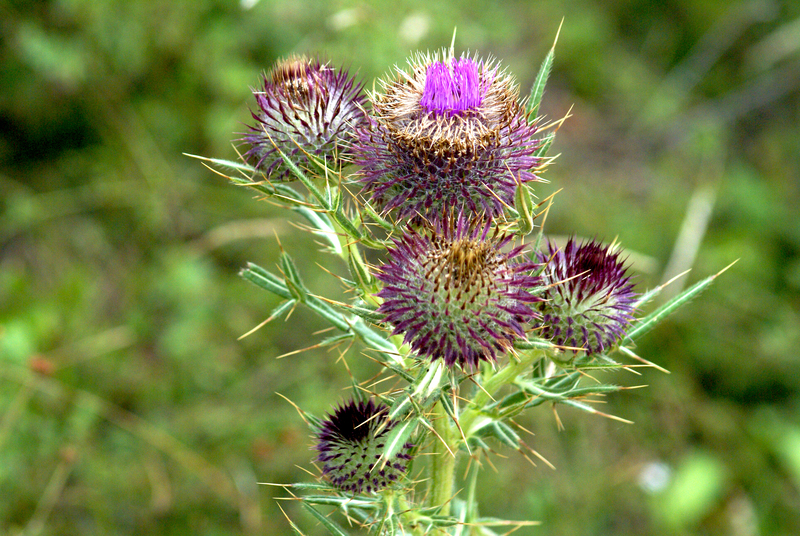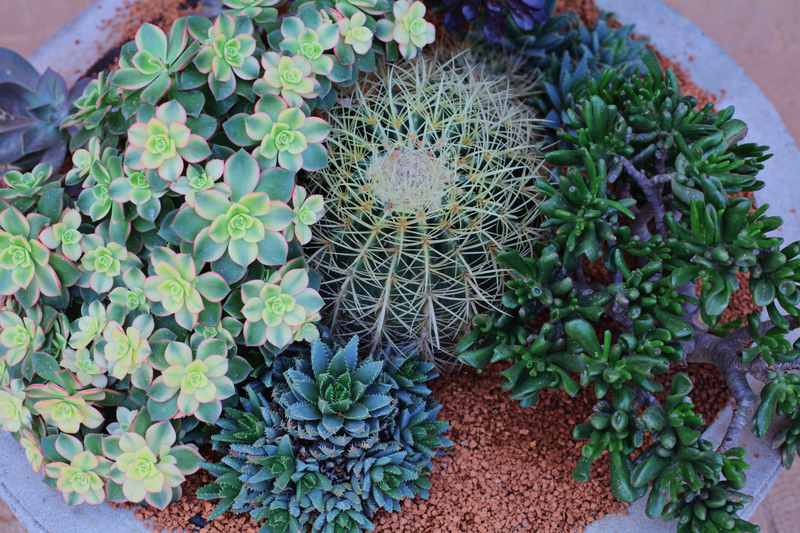Canine Companions in Your Garden Space
Posted on 27/06/2025
Our furry friends mean the world to us, and sharing our outdoor spaces with them brings unparalleled joy. But transforming a garden into a haven for both humans and canine companions requires thoughtful planning. Whether you're a seasoned green thumb or a new dog owner, this comprehensive guide will walk you through everything you need to know about accommodating your dog in your cherished garden space.
Why Include Dogs in Your Outdoor Living Area?
Dogs are more than pets; they are part of the family. Including your dog in your garden space comes with many benefits:
- Enhances Wellness: Both dogs and their owners enjoy health rewards from spending time outside together. Nature offers physical and mental stimulation.
- Promotes Exercise: A garden can act as a secure playground, encouraging dogs to be more active and burn energy.
- Strengthens Bonding: Shared activities, like gardening or fetch, nurture the human-canine bond.
- Reduces Boredom: A thoughtfully designed dog garden prevents destructive behaviors by offering plenty to explore.
Designing the Perfect Dog-Friendly Garden Space
Your goal is to create a harmonious environment where plants, people, and canine companions thrive together. Here are some dog-friendly garden ideas to inspire your landscaping journey:
1. Safe Plant Choices for Canine Companions
Many common garden plants are toxic to dogs. Before planting, review your garden and remove or fence off any potentially harmful greenery. Some safe and attractive options include:
- Sunflowers - Hardy and non-toxic.
- Roses - While thorns pose a minor risk, the plant itself is dog-safe.
- Snapdragons - Bright, colorful, and pet-friendly.
- Camellias - Beautiful blooms that won't harm your pup.
- Ornamental grasses
Avoid plants such as lilies, azaleas, daffodils, foxglove, and sago palm, as these are highly toxic to dogs. A partial list of what to avoid can be found on most veterinary websites.
2. Creating Comfortable Pathways
Dogs naturally patrol their territory, often establishing favorite routes. Designing pathways with canine companions in mind is key:
- Materials: Choose soft mulch, decomposed granite, or flagstone set in sand - all gentle on paw pads.
- Width: Ensure paths are wide enough for your dog to walk comfortably beside you.
- Curves and Hideaways: Integrate gentle curves or add shrubs along walkways to satisfy your dog's natural curiosity and desire for secret spaces.
3. Dedicated Play and Rest Zones
Your dog deserves a spot to play, dig, or simply relax in the shade. Consider these features for a canine-approved garden oasis:
- Digging pits: Fill a corner with soft soil or sand to redirect digging away from your prized perennials.
- Agility features: Add tunnels, ramps, or low jumps for active pups.
- Shade areas: Plant trees or set up umbrellas, pergolas, or dog houses for respite on hot days.
- Water fun: A splash zone with a kiddie pool or dog-friendly fountain keeps dogs cool and entertained.
4. Secure Fencing and Boundaries
Safety is paramount for any garden enjoyed by your four-legged companion. Proper fencing prevents escapes and keeps unwanted visitors out. Keep in mind:
- Height: At least six feet for athletic breeds; lower for smaller or less adventurous canines.
- Material: Choose sturdy wood, vinyl, or invisible fencing supplemented by visible markers.
- Gates: Make sure all gates latch securely and can be locked if necessary.
- Barriers for specific zones: Use decorative fencing to protect delicate flower beds or vegetable patches.

Choosing the Right Garden Design for Dogs and Owners
The best dog-friendly garden design balances beauty, practicality, and canine safety. Here's how to make it work for everyone:
Pet-Proof Landscaping
- Sturdy Plants: Opt for resilient, fast-growing varieties that bounce back from enthusiastic paws.
- Raised Beds: Use raised planters to protect fragile vegetables or delicate flowers.
- Mulch Carefully: Avoid cocoa mulch (toxic to dogs) and stick with cedar or pine bark chips.
Functional Features That Benefit Canine Companions
- Automatic watering systems for both plants and pets.
- Dog waste stations to keep the garden clean and hygienic.
- Outdoor lighting for evening strolls and improved visibility.
- Interactive toys and sensory gardens with pet-safe herbs like basil and mint.
Encouraging Natural Dog Behavior
- Sniffing zones with a diverse mix of scents for mental enrichment.
- Open spaces for free running or playing fetch in secure areas.
- Climbing and perching spots created with safe rocks or low platforms.
Maintenance Tips for a Healthy Dog Garden
Maintaining a dog-friendly garden space involves a little extra vigilance, but the rewards are immense. Consider the following tips:
Safe Use of Pesticides and Fertilizers
- Avoid chemical pesticides and herbicides or switch to organic alternatives.
- Pet-safe fertilizers should always be your first choice.
- Always allow adequate drying time before letting canine companions back onto treated areas.
Regular Clean-Up Routines
- 'Scoop the poop' daily and dispose of waste properly to keep the garden sanitary.
- Rinse down patios or decks frequented by your dog, particularly after muddy adventures.
- Trim grass and hedges to eliminate hiding spots for ticks and fleas.
Seasonal Considerations
- Monitor for heat in summer - ensure water and shade are always available.
- Protect paws from cold and ice with pet-safe deicers in winter.
- Prune regularly to remove fallen leaves, sticks, or berries that might be ingested by curious pets.
Common Challenges of Gardening with Dogs
Even the most well-planned garden can encounter issues when shared with four-legged friends. Address common hurdles with these solutions:
Digging
Channel energy into a designated dig zone, and reward your dog for using it. Bury treats or toys in the allowed area to entice digging where it's safe.
Chewing Plants
Train your dog to leave plants alone using positive reinforcement and deterrents (like citrus sprays). Make sure all garden plants are non-toxic just in case.
Path Trampling
Observe the routes your dog prefers and incorporate these "desire paths" into your design, using stepping stones or dog-friendly grass to keep the area attractive.
Marking
Frequent rinsing and re-seeding can help minimize lawn damage. Hardscaping, mulching, or offering "pee posts" can redirect marking behaviors to less sensitive areas.
Canine Companions: The Joys of Gardening with Dogs
Combining dogs and gardens brings immense joy. Dogs offer companionship and security, while the act of gardening provides humans with relaxation and a sense of accomplishment. When both coexist in harmony, you foster a habitat of happiness, health, and endless tail wags.
Benefits for Owners
- Increased outdoor activity, encouraging a healthier lifestyle.
- Enhanced mindfulness and reduced stress through time in nature.
- Learning and responsibility for children involved in caring for both pets and plants.

Frequently Asked Questions about Dog-Friendly Gardens
What are the most common toxic plants for dogs?
- Lilies
- Sago palm
- Azaleas and rhododendrons
- Daffodils and tulips (bulbs especially dangerous)
- Foxglove
Always double-check the ASPCA or local veterinary resources before planting new additions.
How can I stop my dog from digging up the garden?
Give your dog a dedicated digging pit and bury toys or treats there. Reinforce with positive attention every time your dog chooses the designated area.
What is the best grass for a dog-friendly yard?
- Bermuda, Kentucky Bluegrass, Fescue, and Ryegrass are all durable choices that tolerate canine play.
Are mulch and wood chips safe for dogs?
Most mulch is safe, but avoid cocoa mulch and any with dyes or pesticides. Stick to pine, cedar, or untreated hardwood chips.
Final Thoughts: Canine Companions in Your Garden Space
Sharing your garden space with loyal canine companions requires forethought, creativity, and a love for both gardening and dogs. By considering your dog's instincts, safety needs, and preferences, you can create a garden haven where all species thrive.
- Plan ahead for safety and comfort.
- Choose dog-safe plants and materials.
- Design with play, rest, and exploration in mind.
- Maintain your garden for the health of both dogs and plants.
Your dog-friendly garden will become a source of pride and delight, offering beauty, companionship, and plenty of tail-wagging happiness for years to come. Embrace gardening with your furry friends and watch your outdoor oasis flourish like never before!

